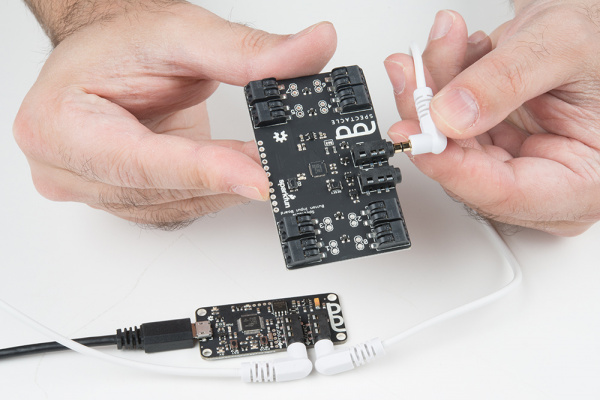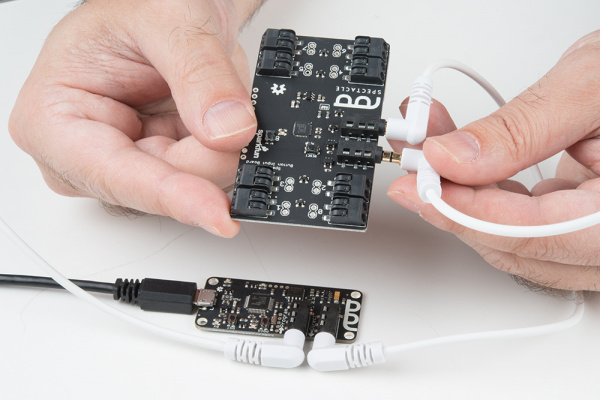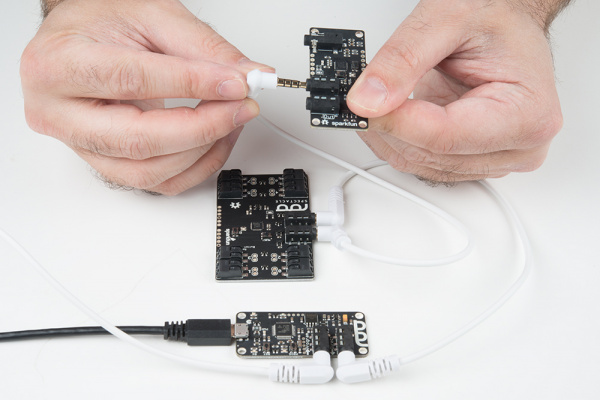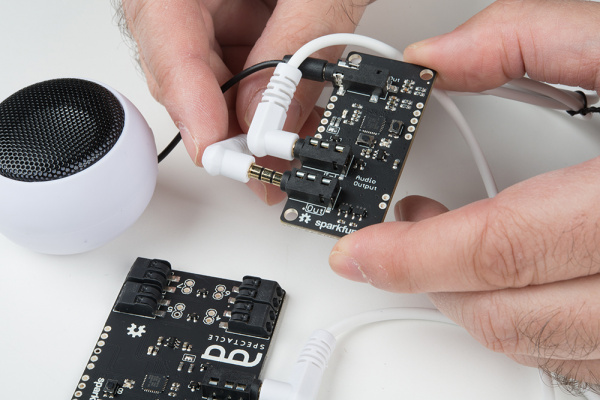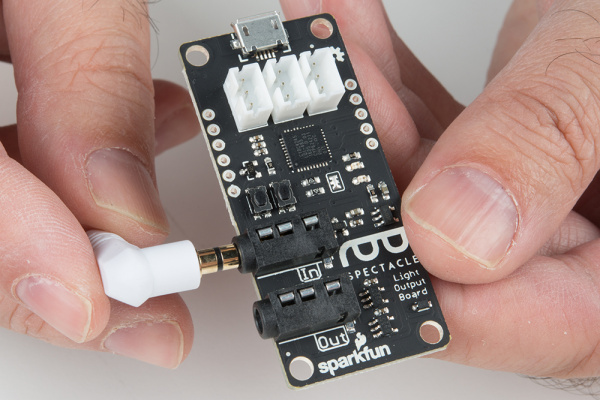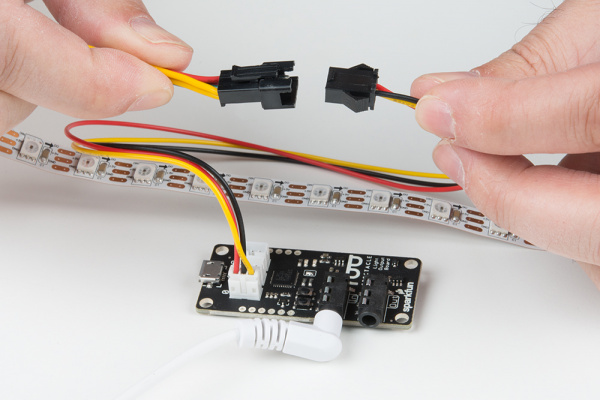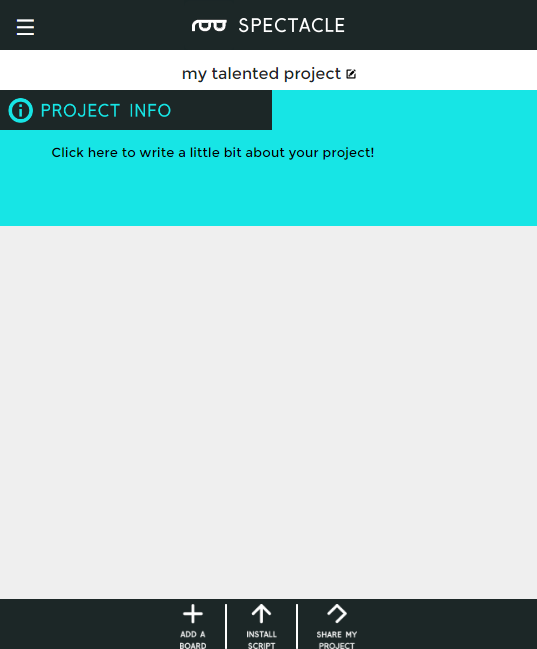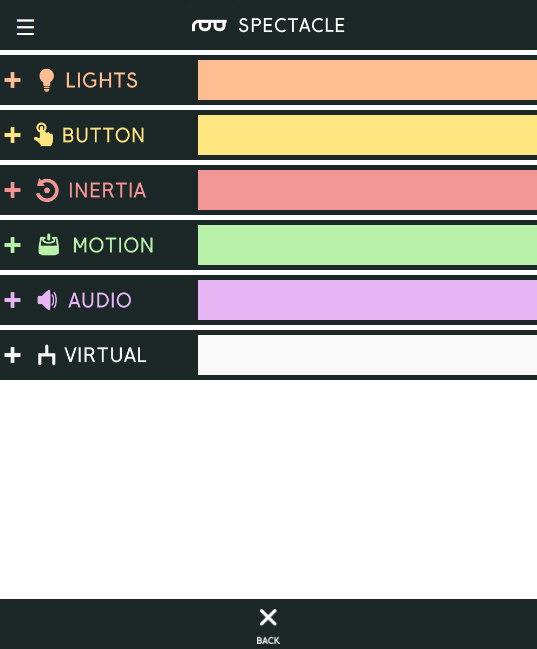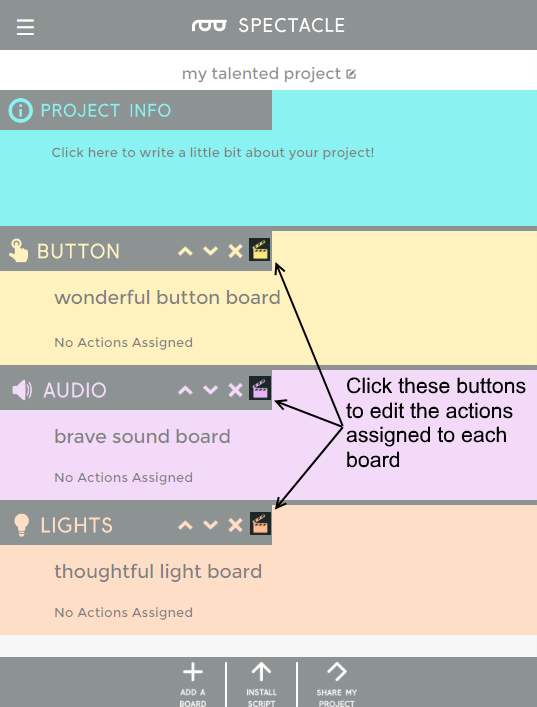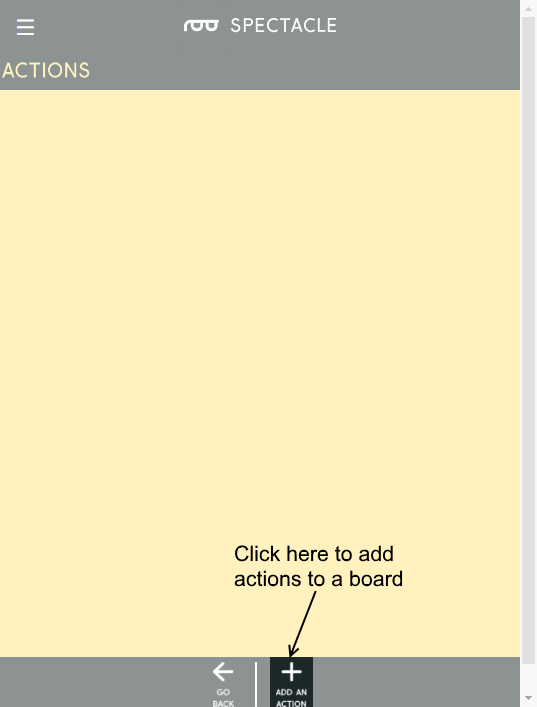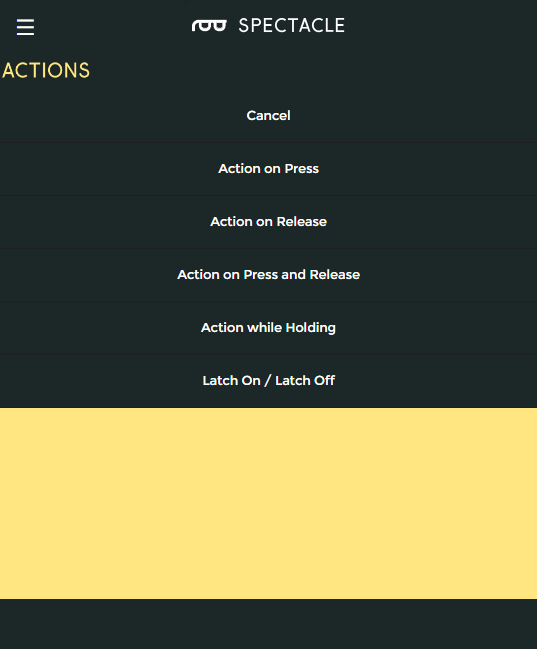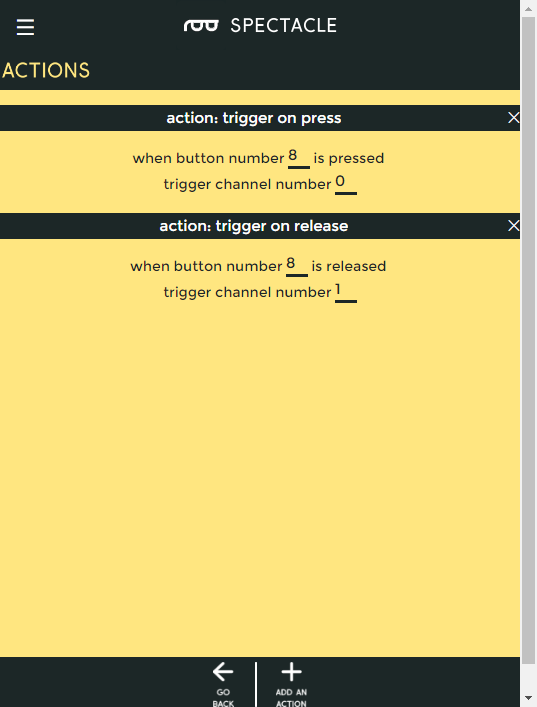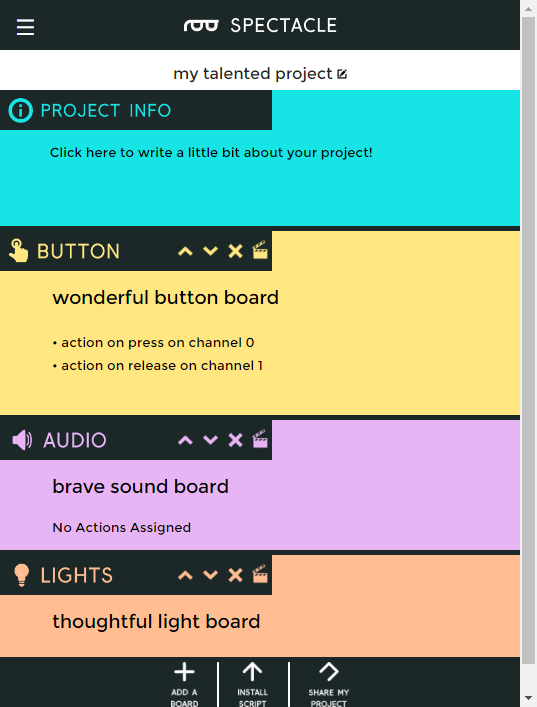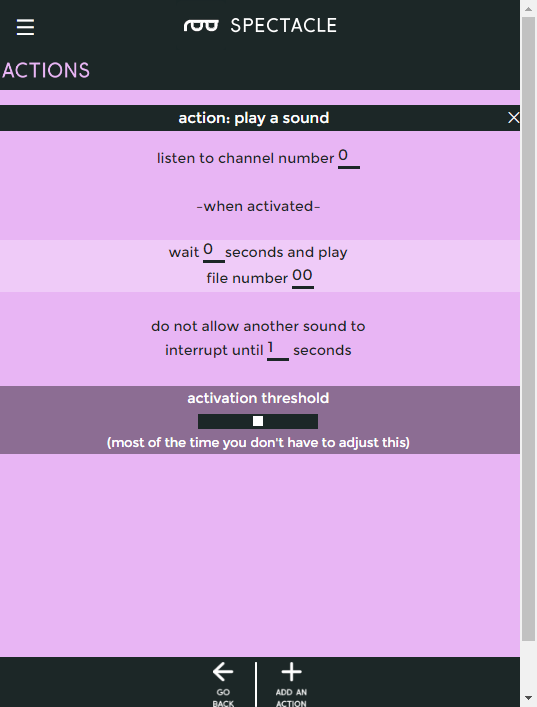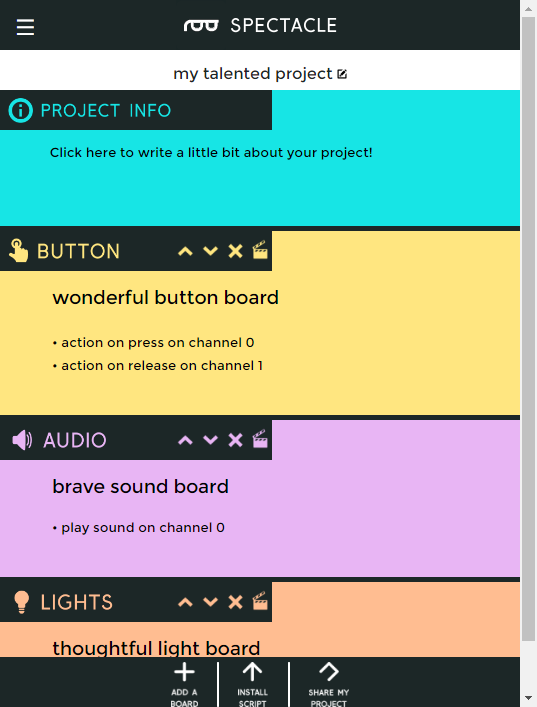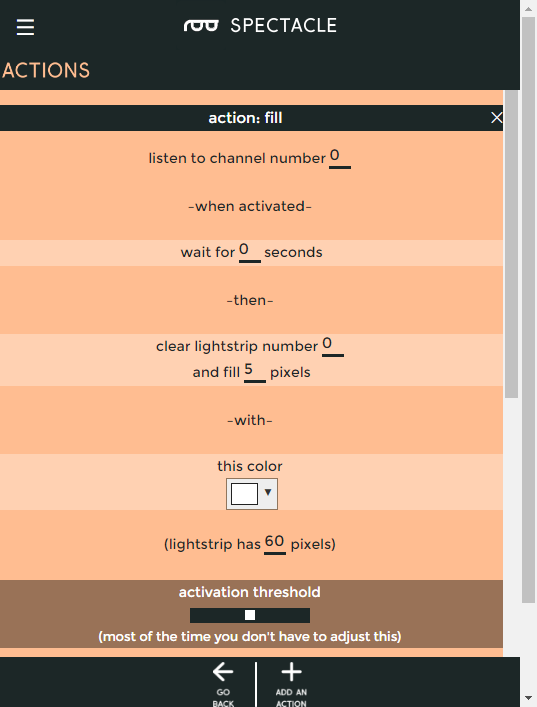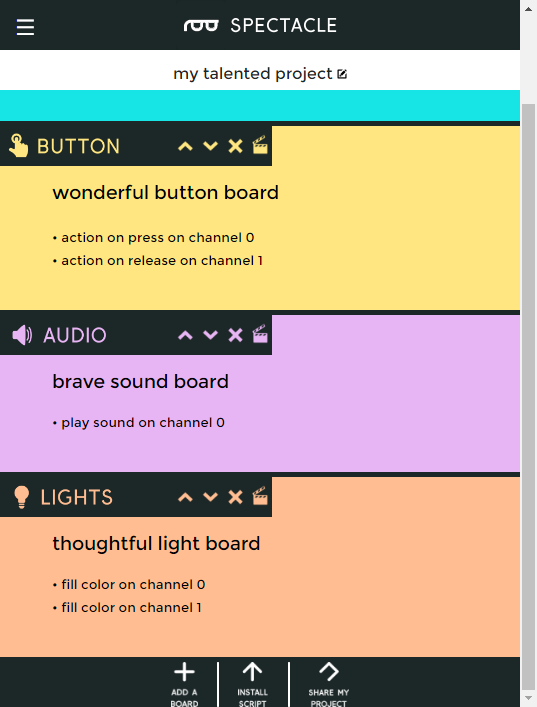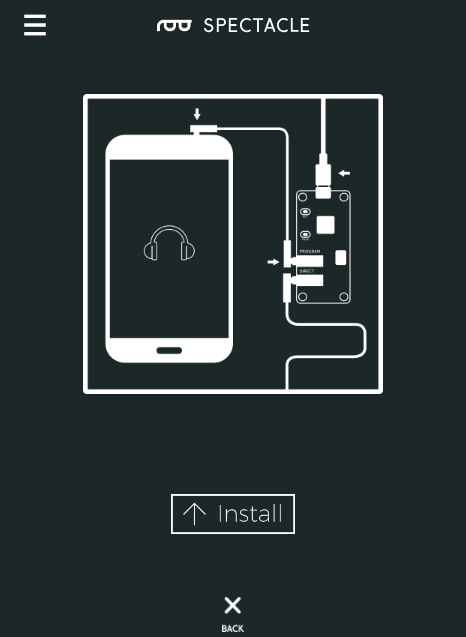Spectacle Light and Sound Kit Hookup Guide
Example Project
Let's use the contents of the Spectacle Light and Sound Kit to put together a working project! We're going to set up a laser gun type setting, where a light comes on and a sound plays when a button is pressed, then the light goes off when the button is released.
Connect the boards
Start by connecting up the boards. All of the required hardware is included with the kit.
First, plug one end of one of the TRRS cables into the "Direct" jack on the Director Board.
Next, take the other TRRS cable and plug it into the "Program" jack on the Director Board.
Take the other end of this cable and plug it into the audio jack of the phone, tablet, or computer that you'll be using to program the system.
Then take the other end of the first TRRS cable (the one plugged into the "Direct" jack on the Director Board) and plug it into the "In" jack on the Button Board.
Grab another of the TRRS cables and plug it into the "Out" jack on the Button Board.
Plug the other end of that cable into the "In" jack on your Audio Board.
Now plug the speaker into the "Audio Out" jack on the Audio Board.
Insert the micro SD card into the Audio Board.
Plug another of the TRRS cables into the "Out" jack on your Audio Board.
Plug the other end of that cable into the "In" jack on your Light Board.
Connect the light strip adapter cable to the Light Board.
Connect the other end of the adapter cable to the light strip.
Finally, plug the Micro B end of the USB cable into the Director Board and the other end into the power adapter. Plug the power adapter into the wall. You should see one solid light and one blinking light on the Light Board, the Audio Board, and the Button Board. On the Director Board, you'll see one solid light and one light which blinks one time, then pauses, then repeats. This shows that power is present and the boards are up and running.
Setting up the board configuration
We're going to assume that you followed the instructions on the previous page about converting sounds to OGG Vorbis format, and that there is a sound on the Micro SD card inserted into the Sound board named "00.ogg". If this is not the case, take a few minutes to go back to that page and prepare a sound.
When you first open the Spectacle app webpage, this is what you'll see. Your project name will differ from mine, as Spectacle assigns a random name to each project.
To continue, we must tell the project which boards we wish to use. Start by clicking the "Add a board" button at the bottom of the page.
This will bring up a list of the available boards. We're going to add our Button Board first of all, so click anywhere in the "Button" box to add it.
Now, repeat this process two more times, adding an Audio Board and a Light Board.
You should now have a list that looks like this, showing all three of the boards we're going to use in this project. Pay attention to the order of the boards in the list! They must match the order of the boards in hardware! If the order of your boards differs from that in the image above, you can use the up and down carets (in the board name bar) to change the order of the boards.
Now you'll need to add actions to each board, to tell the Spectacle system what sort of behavior you want. Click on the clapboard icon (highlighted above) for the Button Board to pull up the "Edit actions" frame.
This will pull up a window that looks like the above. I've highlighted the "Add an action" button. Click it to pull up a list of actions for the Button Board.
This list will pop up after you click the "Add an action" button. We're going to add two actions: "Action on Press" and "Action on Release". Click the "Action on Press" list item, then click "Add an action" again to pull the list back up, then click the "Action on Release" list item to add that action to the list.
Here you can see that we've added the two actions we want for our project. Note that, when added, the inputs default to being blank. You need to put a value in every field for the design to be valid.
Here are the settings you'll want to put into place for this project. You can see that the "Action on Press" is tied to channel 0, and we're using button 8 (the onboard button) as the input signal. "Action on Release" is tied to channel 1, and also to button 8.
Once you've filled in the fields for both actions, click the "Go Back" button to return to your list of boards. This will automatically save the changes you've made.
You can see here that the actions we added for the Button Board appear in the main board list, as a reminder of what each board has been configured to do.
Now, add a "Play Sound" action to the Audio Board. It's the only action the Audio Board supports. Fill in the blanks on the play sound page as shown above.
Back in the main frame, you'll see that the play sound action has been added to the Audio Board's section of the list.
Finally, we'll configure the Light Board. The picture above shows the full list of actions that the Light Board supports. We're going to use the "Fill Color" option, twice, for our project.
Below are the settings for the first "Fill Color" effect to be added. This turns the pixels on when the button is depressed.
Here are the settings for the second fill effect. This turns the pixels off when the button is released.
You can now click the "Go Back" button to return to the main page.
Congratulations! You've completed configuration of your first Spectacle project! Now let's cover loading the configuration onto your Director Board.
Uploading
Now that you've created your Spectacle program it's time to upload it to the Director Board. If you followed the instructions above, your uploading device is connected to the board and ready to go, so all you need to do is touch the "Install Script" button at the bottom of the page. That will bring up the page seen below.
Make sure the volume on your device is turned all the way up, and that no other audio source (music, video, etc) is playing in the background. Then press and hold the "RST" button on the Director Board, press and hold the "PROG" button, then release the "RST" button.
This will put the Director Board into program mode. You'll see the light on the board blink three times, pause, then repeat. This is your visual indicator that the board is in program mode. Once you've established that the board is in program mode, you can begin programming by touching the "Install" button on the Spectacle app screen. The button will gray out during the programming process, which should only last for a few seconds. Once programming is done, you'll see the light on the Director Board blink 10 times, pause, then repeat. That's your cue that the program was uploaded successfully.
Press the "RST" button again to reset the system and begin the program!
If you have any troubles, visit the troubleshooting page for help resolving your issues.



